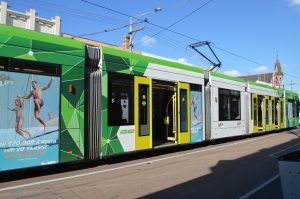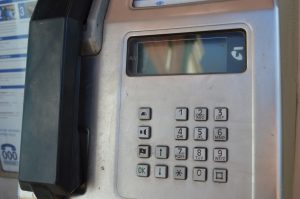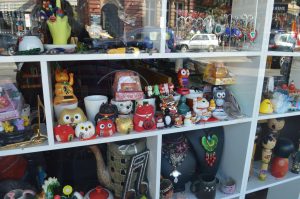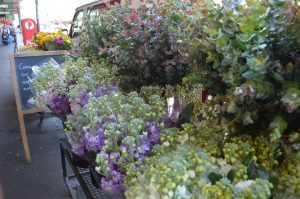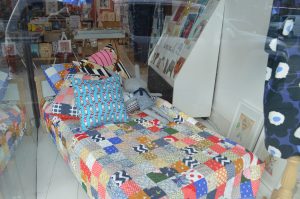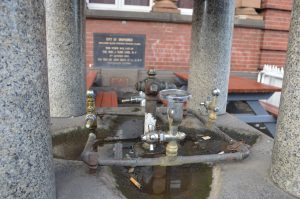What are the differences and similarities between what you expected to notice and what you recorded?
Previously mentioned in my prompt post, my expectations of Brunswick were mostly of cafés and eateries that catered to the brunch culture in Melbourne. However, reflecting upon on the photos, it was clearly not the case. My photos seldom had any images of food, let alone cafès and eateries. It consisted of close-up shots of the objects and mainly bits of pieces of Brunswick:
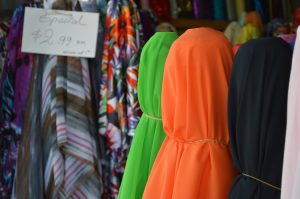
An example of Brunswick’s little bits and pieces were these fabrics from the fabric shop. I was taken aback to come across shops like these. My expectations of Brunswick were of a modern image with newly-opened restaurants but in reality, it was an old town that widely contained run-down shops (this is not necessarily a bad thing), opportunity shops and so much more. It was like any other old suburb I visited, suburbs such as Niddrie, Fitzroy, Northcote, etc. It definitely had the atmosphere of an old, Victorian style town. That was the difference in my observation of Brunswick – what I expected to notice beforehand.
On the other hand, the similarities between my expectations of what I was going to notice versus what I was going to I recorded was very little – as I previously said, my expectations of noticing were going to be of cafès and eateries, however, I did not record anything that involved a cafè or better yet, anything brunch related. The only thing I can mention about the similarity that coincided between my expectations and what I recorded was capturing the culture of Brunswick – it was really the little details that encapsulated and therefore, fulfilled my aim of my expectations with my recordings.
Moving on, Lizzie’s form of recording versus mine was very different, proving the versatility of our ability to notice. We did not discuss how we would notice and record with a certain style except for what kind of tools we would use to notice. Thus, this resulted in both unique forms of noticing; Lizzie had aimed to notice Hosier Lane from one perspective of the location whilst everything around her changes.
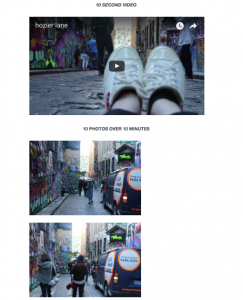
(Courtesy of Lizzie’s noticing post)
On the other hand, I had decided to walk around a small area of Brunswick and capture whatever caught my attention. This was also proven in out videos – Lizzie wanted to highlight the traffic of people that were coming in and out of Hosier Lane, while I recorded places and objects that were unmoving and unapparent to the people around what I noticed (except for one of the footage with the woman walking her dog). This both displays our different ways of noticing and interacting the environment around us. Our collaboration helped us both see our places in a new perspective, broadening our capacity to be introspective.
In relation to the Bogost reading, I based it on Bogost’s theory on photography – he describes photography as “commonplace” that some or most media makers ignore its practicality. I agree with Bogost in this statement, seemingly as we sometimes want to photograph for artificial purposes. I believe that this project has led me to understand what Bogost was saying, and that we should not take the power of photography for granted. It presents so many dynamics and complexities that we have yet to understand about the world – it helps us see what cannot be seen by the naked eye. I previously would not have gone to the lengths of recording what I recorded in Brunswick but after this experience and Bogost’s reading, I will do more of it from now on.
At the same time, Patrick Pound’s exhibition can be partially acknowledged for the production of these images and videos. His hobby/work to collect has inspired me to be more aware of what was going on around Brunswick and the world in general. Each individual and item has so much character and story to tell in his exhibition that I wanted to capture what Brunswick had to offer.
Overall, my work has highly been influenced by Bogost’s take on photography and Pound’s extensive range of collection of various things. This has shaped the result of my work and has provided Lizzie and I a different perspective of Brunswick.
Lyreca.




